How to arrange a live fence in the country and what is better to plant as a hedge?
Ugly fences spoil the countryside landscape. Planting a hedge in the country will help both define the boundaries of the site, and not disturb the natural harmony. It is pleasant to relax, not admiring the rotten boards or concrete slabs, but the flowering shrub. It is even easier to create such a fence than to build a capital wall, and it will perfectly perform its function for many years.
What kind of living fences are there?
Depending on the purpose and tastes of the owners, hedges are of different types. If you need a fence that protects the area from livestock, people who want to go directly through your territory, you need a tall, preferably thorny shrub with strong tall trunks. For decorative screens, dividing the area into different zones are suitable bindweed and other herbaceous plants.
Vegetable fences can be categorized according to different criteria:
- high, medium and low;
- evergreen and deciduous;
- decorated and free growing;
- solid and translucent;
- single-tiered and cascading;
- homogeneous and mixed.
Depending on which view you like best, you need to decide what to plant in order to get a living fence in the country. Not only shrubs can be used as low borders, but also herbaceous perennials: peonies, phloxes, lilies... Such borders will perfectly frame the paths, divide the flower garden into several parts.
A maze will be useful on the playground. There is no need to plant tall shrubs for toddlers so that children are not frightened by getting lost on the paths. Teenagers can have a more serious puzzle with different branches and walls of tall plants. If you leave an empty area in the center, you can arrange small picnics, set up a barbecue and relax with the whole family.
Where to begin?
You've got a new site. Where to start mastering it? Of course, from the fence. The fence should be high enough, solid and strong. Immediately discard plants with unusual beautiful flowers and delicious fruits, if you do not want every passer-by to take a piece of the fence with them.
For registration of the boundaries of the territory are suitable:
On the borders of the site, it is better to plant plants that do not require pruning and can grow freely. At the same time, you need to remember that your plantings should not shade the territory of your neighbor, it is advisable not to acquire breeds whose height is more than 2 m.If you make a solid wall of fluffy Christmas trees on your northern border, after a few years they will grow into huge trees and close from the southern sun half of the neighboring plot. In a conflict situation, you may be forced to cut down trees.
Perhaps the neighbors in the country have already installed ugly concrete structures and on your site you feel like in the courtyard of a prison. The situation is easy to fix. In the first year, plant climbing plants along existing structures that will quickly create a green screen:
- bindweed;
- decorative beans;
- wild grapes;
- hop.
In the fall, you can replace annuals with long-lived shrubs. In this case, you no longer need to be afraid of garden thieves and you can plant grapes, raspberries, roses and other attractive crops.
Dividing the site into zones
You have fenced off the territory, now you need to decide which zones you want to separate on your site. If the area is small, you can arrange live fences that serve as a screen and at the same time supply you with crops.
Around the playground and resting place you can plant:
- grapes;
- currants;
- raspberries;
- honeysuckle;
- irgu;
- blackberry;
- gooseberry.
In spacious areas, you can arrange a fancy cascading hedge. The back row consists of freely growing shrubs, the rest of the layers are formed at the request of the owners. Fences from plants of the same species, but with different colors of leaves and flowers, look stylish. You can trim the rows evenly for a crisp step, or you can shape them into waves or jagged edges.
Low borders give a huge scope for imagination. Their task is not to close or defend the territory, they just emphasize the boundaries. From such a fence, neither density nor strength is required. Small bushes trimmed in the form of balls, cones or animal figures will look spectacular. Corners and edges can be marked with blue Christmas trees or other trees with unusual foliage colors.
Sometimes a fence is needed not for many years, but only for a couple of seasons - for example, to close the area on which you are building something. A rope stretched at a height of 2 m and curly annuals will help you solve this problem: morning glory, nasturtium, ornamental beans. Bricks, pits and other unsightly pictures are not visible behind the green wall, and when the work is over, the fence will not be a pity to destroy.
Living Lattices
A trellis fence resembling a decorative lattice can become a decoration of the site. To make it, take a shrub with not very thin trunks: hawthorn, willow. Plant plants as close as possible to each other. Prepare in advance trellises or wooden structures on which the shoots will be attached.
The first year, let the bushes grow freely, and in the fall, cut off all the shoots, leaving hemp no higher than 12 cm. After a year, leave strong shoots and intertwine them with each other at an angle of 45⁰. Cut the bark at the junctions of the branches and fix the shoots firmly. The result should be a grid of rhombuses.
The decorated hedge is attached to the trellis or lattice frame. In the future, remove all shoots that do not grow in the plane of the screen, but cut the tops along a straight line. The fence turns out to be narrow, takes up little space, and in terms of decorativeness it can compete with a lush multi-tiered structure. A living lattice will help hide both a concrete fence and an ugly structure.
A fence made of trees
A hedge in the country can be made not only from shrubs, but also from trees. Such a wall will grow for a long time, but its beauty and strength will meet the expectations. Immediately after planting, the main trunk must be cut off, leaving about 15 cm in height. After that, the side branches will begin to develop intensively. In a few years, neither man nor animals will be able to get through the thick hedge.
For planting, you need to choose trees that tolerate pruning well: maple, linden, hornbeam. Poplar grows quickly, perfectly protects against dust and noise, it can be trimmed, but this plant has very fragile branches. In strong winds, a huge piece of wood can break off and damage plantings or injure people. The second reason why it is undesirable to plant poplars on the site is a huge amount of fluff.
A fence made of coniferous trees is very beautiful, only over time it will reach too high a height, and you cannot shorten the tops of the trees. Such a wall can be arranged on the north side of the site if it borders on a river or forest and the shadow does not bother anyone. If over the years the lower branches begin to dry and die off, a solid wall of shrub can be grown between the trunks.
Purchase of seedlings
For hedges, it is best to use plants that originally lived in your area and have adapted to the climate. If you arrange a fence in the country from capricious exotic bushes, they can develop unevenly, some specimens will get sick or die, and a solid, beautiful fence will not work. An unpretentious willow, lilac or hawthorn is much more reliable.
For small areas, seedlings can be grown from cuttings. This option is suitable for low curbs, the next year after planting the plants will reach the desired height. It is possible to grow independently planting material for a high fence in the country only if you agree to wait several years.
If you need to fence the perimeter, you need a lot of seedlings, and they must be large enough. Choose bushes no older than 6 years. When buying, pay attention to the roots, keep them moist and healthy. The crown should be developed evenly in all directions.
Planting a live fence
Dig a trench 0.5 m deep and wide.If you want to make a cascading fence, increase the width by half a meter for each tier. Pour sand at the bottom for drainage. Lay the top fertile layer separately when digging, it will go for filling the roots.
Plant trees at a distance of 1 m from each other, tall bushes can be placed every 0.7 m. The lower the plants, the denser the planting should be. Spill the trenches well with water and throw fertile soil mixed with organic fertilizer and hydrogel to the bottom. If you purchased seedlings in containers, plant them along with a clod of earth. It is desirable to treat an open root system with a growth stimulator. Trim off any dry, damaged and diseased growths, sprinkle the cuts with crushed charcoal and plant the bushes in the trench.
For tall plants, place pegs so that the wind does not swing them during the rooting period. Cover the trenches with earth, compact lightly and water to avoid air voids. Mow the top layer with cut grass, compost or peat.
Advice
As mulch, you can buy decorative sand and pebbles of different colors. With their help, you can lay out various ornaments along the plantings.
Green hedge maintenance
To make your green fence in the country always pleasing to the eye, it needs good care. First of all, provide enough moisture so as not to spoil your mood with the sight of drooping leaves and wilted flowers. If the soil is not covered with a layer of mulch, loosen the top layer in both directions at a distance of at least 50 cm. Spill the soil with plenty of water so that it is saturated with moisture to a depth of about 40 cm.
Top dressing depends on the type of plants and on whether you will eat the fruits. Apply organic fertilizers in the spring - 5 kg per m22... In the summer, feed with potash and phosphorus fertilizers. In the fall, prepare a composition of 50 g of ammonium sulfate, 30 g of potassium salt and 50 g of superphosphate.
Particular attention should be paid to trimming the living fence. You need to do this work regularly, otherwise the decorative hedge will turn into a dense jungle. In young plants, for the first 2 years, pruning is performed several times per season to stimulate the development of new shoots. Mature trees and shrubs are cut in spring and autumn. This removes all diseased, damaged and dry processes, as well as branches that grow in the wrong direction or thicken the crown too much. After that, shoots are removed and shortened, which give the fence an unkempt look.
Output
A green fence in the country does not require large material costs, but the plants need careful care. Weigh all the pros and cons: can you constantly water and cut a lot of shrubs, or is it better to install the finished structure once and forget about it? In corners where dust and dirt do not reach, you can make a fence from fruit crops that will supply you with vitamin supplies.
To plant a live fence, you need to choose plants that tolerate pruning well and look beautiful all season. Coniferous and evergreen crops, as well as shrubs with variegated leaves, look great. You can pick up varieties of the same type, but with different flowering periods, then the fence will delight you with bright colors all summer.
To keep the hedge from looking messy, you need to learn how to trim the shrubs correctly. If the wall is too long, you can not make it out all the way to one height, but make teeth, elevations, balls. A green fence will protect your territory and fill it with the beauty and scent of flowering plants.
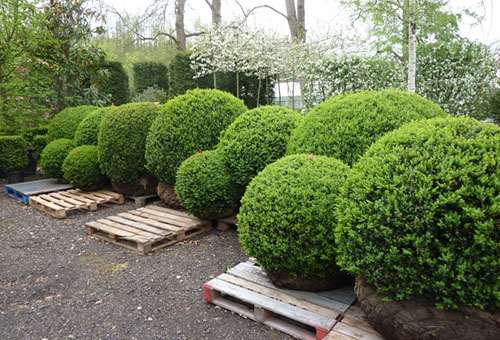
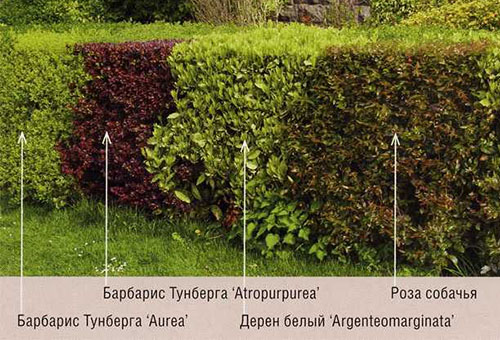

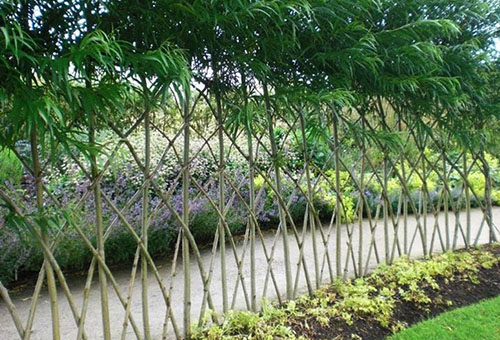
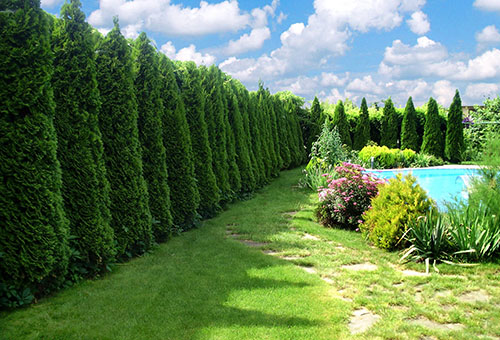
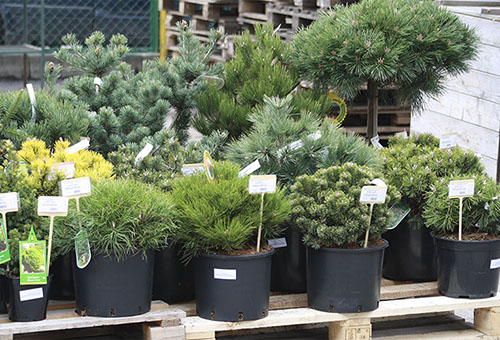
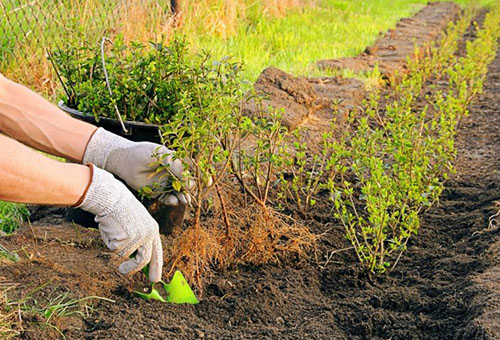

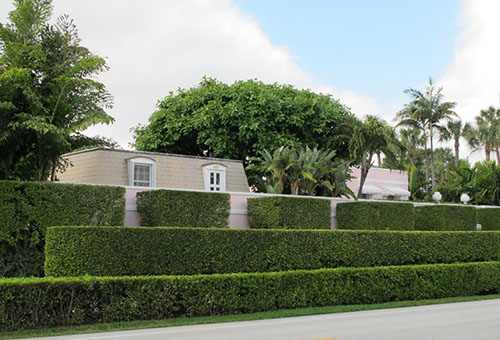
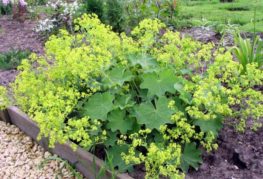
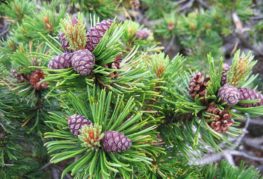
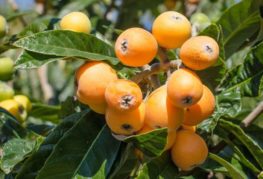
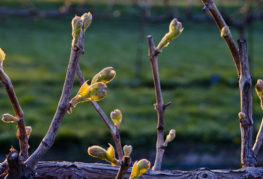
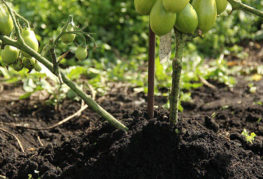
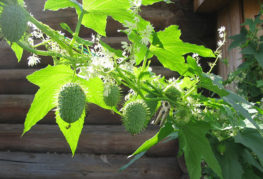
and will be published shortly.